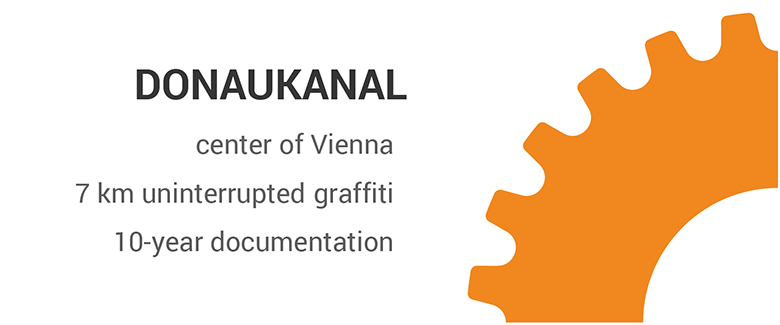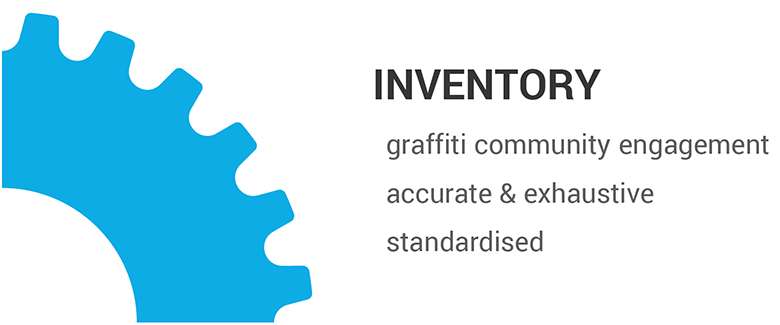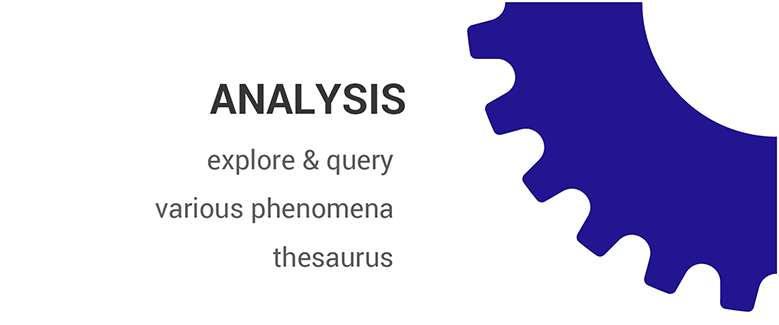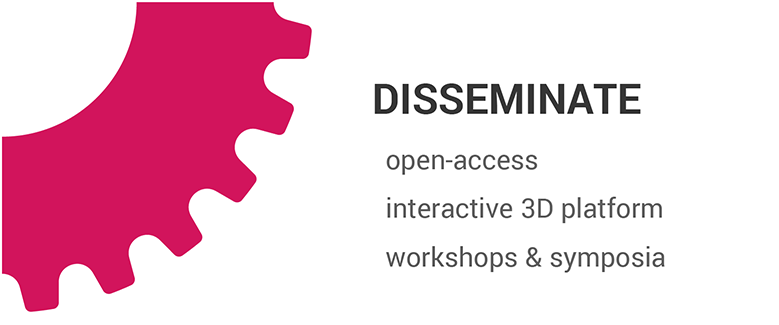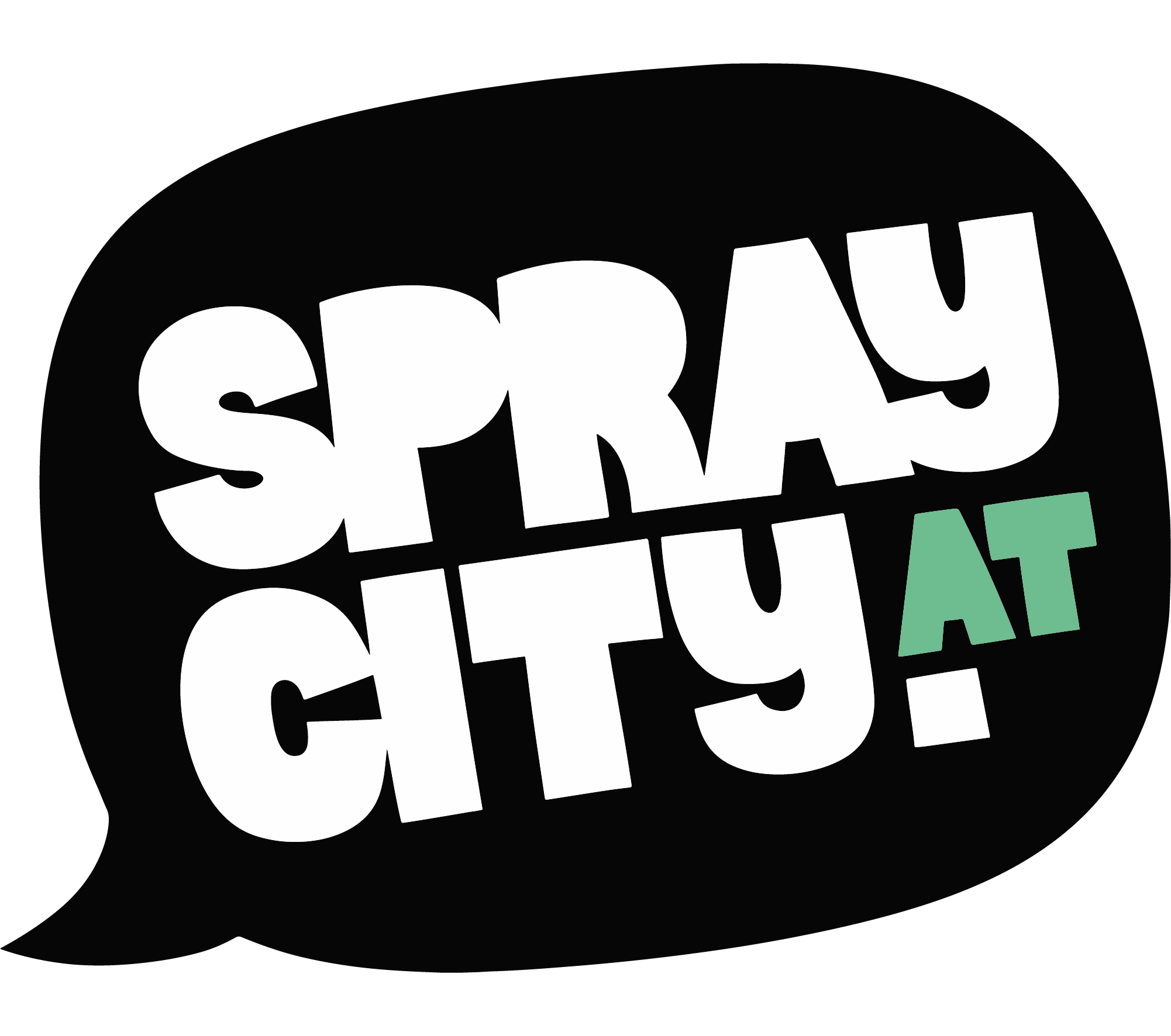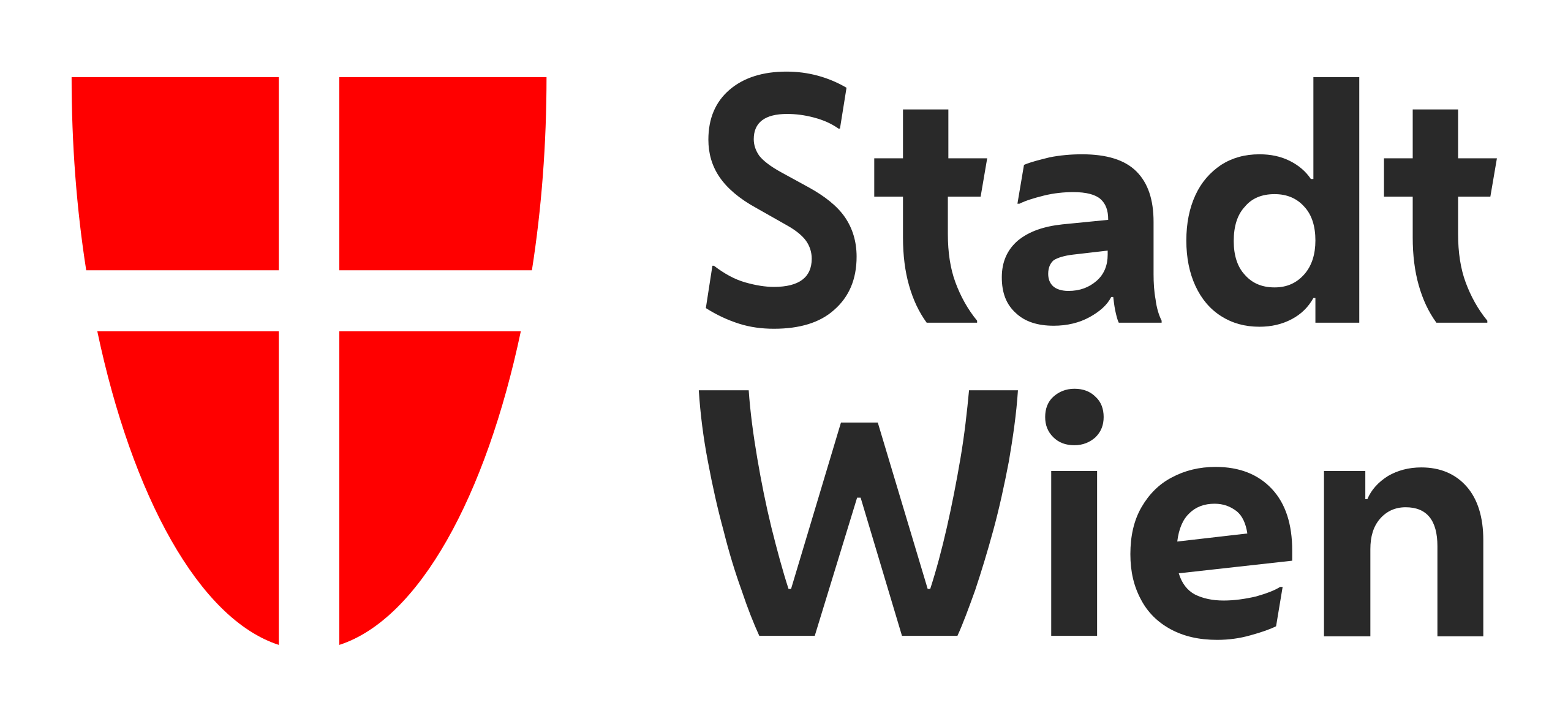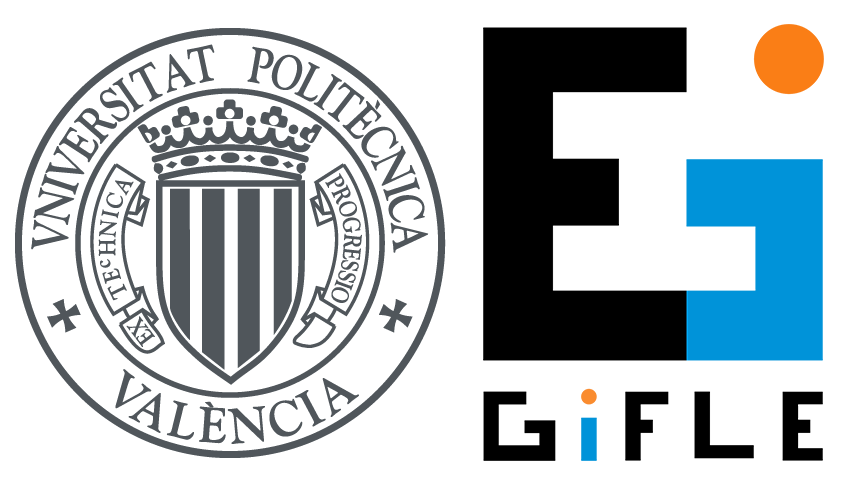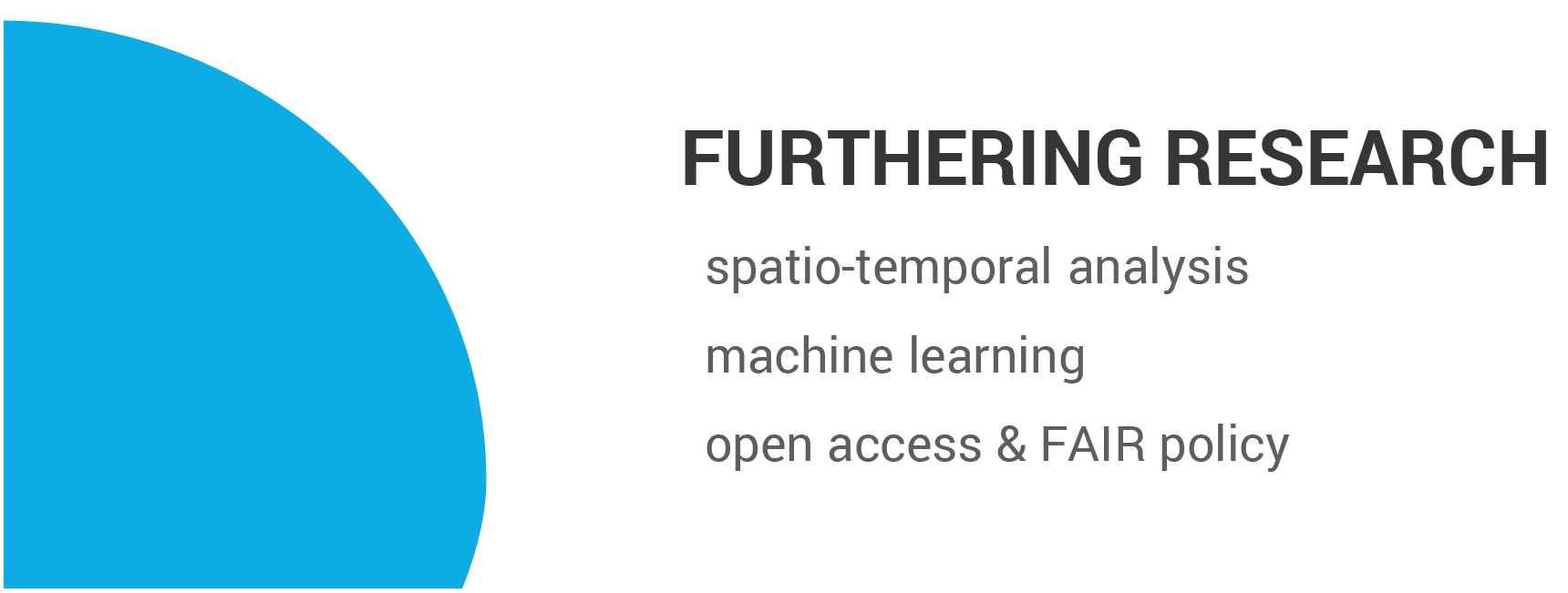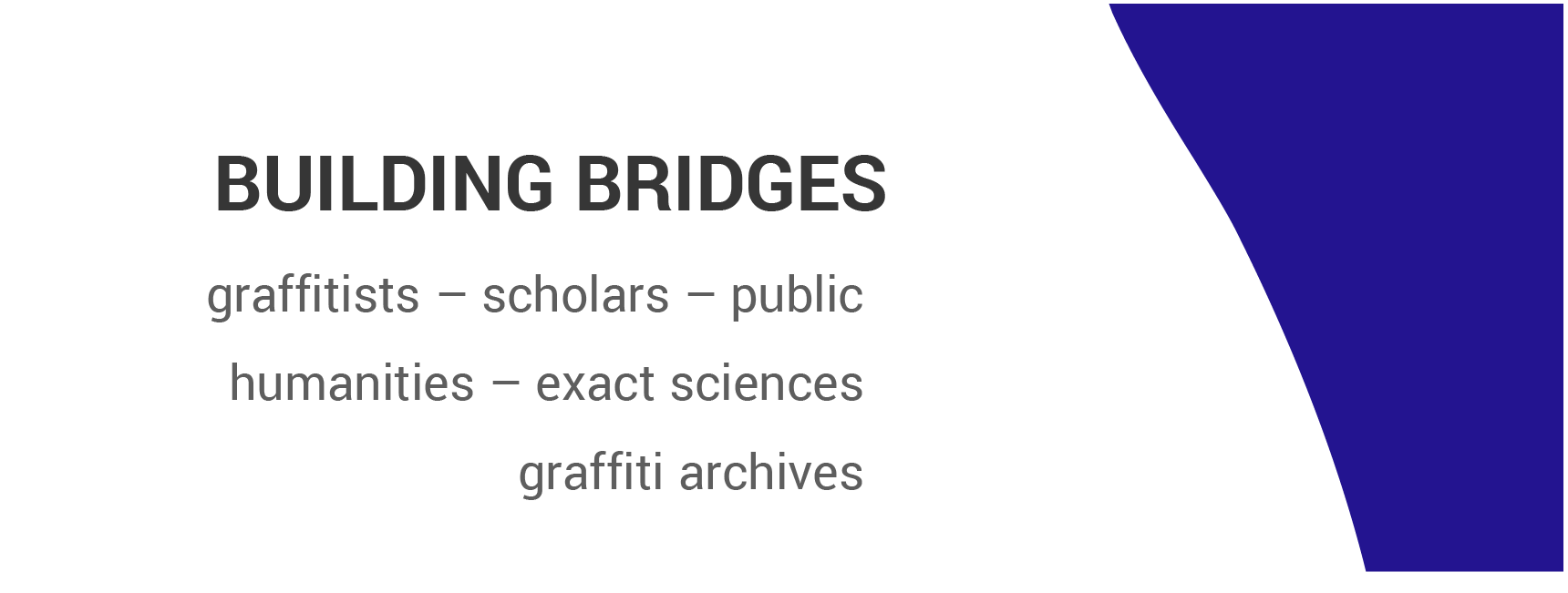graffiti makes people laugh, wonder, angry, think
graffiti is a unique | complex | short-lived | socially relevant form of cultural heritage
academic graffiti project

the two-year INDIGO project aims to build the basis to systematically document | disseminate | analyse almost 13 km of uninterrupted graffiti along Vienna’s Donaukanal (Eng. Danube Canal) in the next decade
graffiti community engagement and regular photo visits allow INDIGO to build a spatially, spectrally, and temporally accurate record of most (il)legal sprayings, engravings and other personal expressions on the Canal’s public urban surfaces
a spatial database manages all images and relevant metadata like style, artist pseudonym and creation data, while the involvement of graffiti creators and scholars safeguard (meta)data correctness and completeness
this database feeds a free online platform that empowers everyone to explore (through virtual walks or displaying the change of graffiti through time) and analyse (via spatio-temporal-semantic queries) all graffiti records
storage in a certified repository ensures the necessary digital longevity and free download of all data, so that INDIGO can realistically preserve and disseminate society’s thoughts and artistic expressions marked upon its walls

Graffiti is a short-lived form of heritage balancing between tangible and intangible, offensive and pleasant. Graffiti makes people laugh, wonder, angry, think. These conflicting traits are all present along Vienna’s Donaukanal (Eng. Danube Canal), a recreational hotspot – located in the city’s heart – famous for its endless display of graffiti.
The two-year INDIGO project aims to build the basis to systematically document, monitor, and analyse 12.9 km of Donaukanal graffiti in the next decade. Combining the local graffiti community’s engagement with regular visits along the Canal ensures that most graffiti gets colour-accurately photographed soon after their creation. A bi-annual total photographic coverage should pick up most of the remaining graffiti. All images are processed into detailed, distortion-free orthophotographs and textures for the canal banks’ 3D surface model (provided by the City of Vienna). In this way, INDIGO will build a spatially, spectrally, and temporally accurate record of all possible sprayings, engravings and other works of personal expression attached in (il)legal ways to the public urban surfaces of the Donaukanal.
The OpenAtlas spatial database manages all these data, along with auxiliary data (like videos) and relevant metadata such as style, artist pseudonym, and creation data. INDIGO ensures (meta)data correctness and completeness through the graffitists’ essential involvement and collaboration with local and international scholars. The CIDOC CRM ontology and a novel thesaurus facilitate a semantic database structure with hierarchical, graffiti-related terms.
This database represents a spatio-temporal inventory of all graffiti along Vienna’s central waterway, thus explaining the project’s title INDIGO: IN-ventory and DI-sseminate G-raffiti along the D-O-naukanal. The dissemination part is taken care of by a freely accessible online platform that enables scholars, graffitists, and non-specialists alike to visualise, explore, and query graffiti inside the INDIGO database. This web-based interface allows virtual walks along the Donaukanal or the display of graffiti through time, while simultaneously supporting spatio-temporal-semantic questions like “where were all political messages from 2021 located” or “which graffiti was visible for more than three months and featured animals”. In this way, INDIGO enables cultural, ethical, legal, or political assessments of graffiti. Simultaneously, its database size also invites the development of methods to mine and analyse extensive image collections.
Since storage in the ARCHE repository ensures the necessary digital longevity and free download of all data, INDIGO can realistically preserve and disseminate society’s thoughts and artistic expressions marked upon its walls.
Graffiti ist eine kurzlebige Form des Kulturerbes im Spannungsfeld zwischen materiell und immateriell, anstößig und ansprechend. Graffiti bringt Menschen zum Lachen, in Aufruhr und zum Nachdenken. All diese widersprüchlichen Merkmale findet man entlang des Wiener Donaukanals, einem Freizeit-Hotspot im Herzen der Stadt, berühmt für seine endlosen Graffiti.
Das zweijährige Projekt INDIGO soll die Grundlage zur systematischen Dokumentation und Analyse von 12,9 km Donaukanal-Graffiti im Laufe des nächsten Jahrzehnts schaffen. Die Einbindung der lokalen Graffiti-Gemeinschaft und regelmäßige Besuche des Kanals stellen eine rasche und farbgetreue Fotodokumentation der meisten neu entstandenen Graffiti sicher. Eine halbjährliche fotografische Gesamtaufnahme soll auch den Großteil der restlichen Graffiti erfassen. Alle Bilder werden zu detaillierten, verzerrungsfreien Orthofotos und Texturen für das 3D-Oberflächenmodell der Kanalufer verarbeitet. Somit wird INDIGO eine räumlich, spektral und zeitlich genaue Aufzeichnung aller möglichen Sprayings, Markierungen und anderer Werke persönlichen Ausdrucks erstellen, die (il)legal an den öffentlichen Oberflächen des Donaukanals angebracht sind.
Die räumliche Datenbank OpenAtlas verwaltet alle diese Daten, einschließlich Hilfsdaten (z.B. Videos) und relevanter Metadaten wie Stil, Künstlerpseudonym und Entstehungsdatum. Durch die maßgebliche Mitwirkung der Graffitikünstler/innen und die Zusammenarbeit mit diversen Wissenschafter/innen gewährleistet INDIGO die Korrektheit und Vollständigkeit der (Meta-)Daten. Die Verwendung der CIDOC CRM-Ontologie und ein neuartiger Thesaurus ermöglichen eine semantische Datenbankstruktur mit hierarchischen, graffitibezogenen Begriffen.
Diese Datenbank stellt eine räumlich-zeitliche Inventarisierung sämtlicher Graffiti entlang der zentralen Wiener Wasserstraße dar, wodurch sich auch der Projekttitel INDIGO: IN-ventory and DI-sseminate G-raffiti along the D-O-naukanal erklärt. Die Dissemination wird durch eine frei zugängliche Online-Plattform gewährleistet, die es erlaubt Graffiti innerhalb der INDIGO-Datenbank zu visualisieren, zu erforschen und abzufragen. Diese webbasierte Schnittstelle ermöglicht virtuelle Spaziergänge entlang des Donaukanals oder die Darstellung der Graffiti im Zeitverlauf; zudem unterstützt sie räumliche-zeitliche-semantische Anfragen wie “wo befinden sich politische Botschaften aus dem Jahr 2021” oder “welche Graffiti waren mehr als drei Monate sichtbar und zeigten Tiere”. So können kulturelle, ethische, rechtliche oder politische Diskurse von Graffiti erfolgen. Gleichzeitig regt die Größe der Datenbank zur Entwicklung von Methoden zur Analyse umfangreicher Bildsammlungen an.
Da die Speicherung im ARCHE-Repositorium die erforderliche digitale Langzeitarchivierung und den freien Download aller Daten sicherstellt, kann INDIGO die auf den urbanen Oberflächen markierten Gedanken und künstlerische Ausdrucksformen der Gesellschaft realitätsnah bewahren und verbreiten.
please help us out .
use our hashtag when posting new graffiti
use our online form to report graffiti
#indigodonaukanal
project INDIGO in numbers
research pillars
work packages
collaborating institutes
major deliverables



